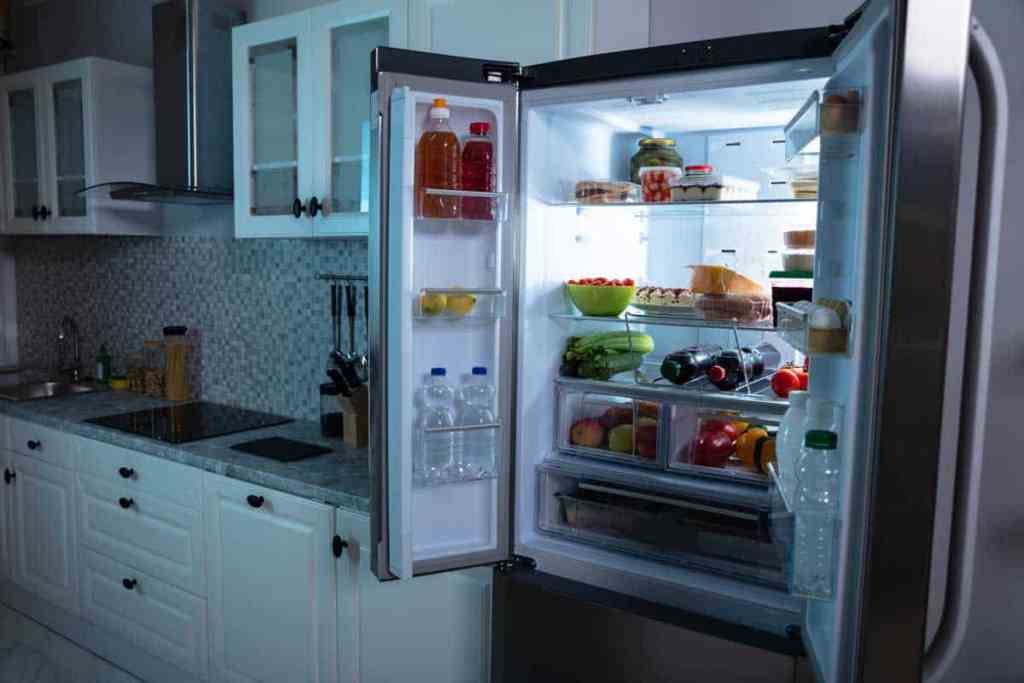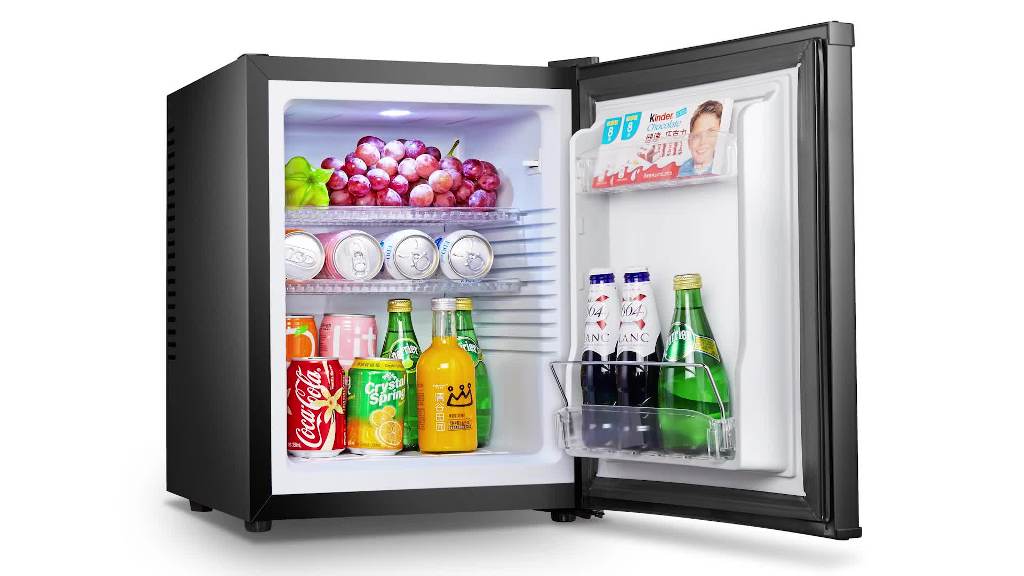Refrigerators differ not as much in the principle of operation, which is to dissipate heat from food in the chamber, as in the technologies that are used to do so.
Compressor class
According to Aaron, RefrigeratorFAQ.com, The most common type of refrigerator is the compressor type. These are familiar household appliances that stand in each house. Here, the refrigerant is used, which takes away heat from the inner space of the chambers. In this case, the physical property of gas is used to cool down when expanding and warm up when compressed.

The construction of the compressor refrigerator includes:
- refrigerant, a gas that can easily change its aggregate state;
- the compressor unit of closed type;
- a condensing system that acts as a heat dissipation device for the environment;
- evaporator, where the refrigerant expands and cools.
If you consider the design of the refrigerator by the location of the units, you can easily identify certain parts of the appliance.
- The compressor is located at the bottom, it’s visible and recognizable. There can be one or two compressors in the refrigerator.
- The condenser is a dark-colored grid, sometimes manufacturers make a closed panel fixed in the rear part. You can bring your hand to this area of the refrigeration system to understand how much it heats up when working for the purpose of heat dissipation.
- The evaporator is inside the fridge. The structure of the tubes is hidden in the walls of the appliance, and each chamber (if we talk about a model with divided spaces) has its own refrigerant expansion unit.
As for the method of operation of multi-chamber single-compressor refrigerators, different modes of cooling are achieved by simple redistribution of the refrigerant. A special electronically controlled gateway directs a certain amount of gas to the desired area.
Two-compressor refrigerators look great. They are specially designed to guarantee extremely high refrigerant removal rates in freezers and medium ones in refrigerating areas with temperatures above zero or within -10 degrees Celsius.
The compression scheme is simple:
- The refrigerant is led into the evaporator, where it abruptly changes from liquid to gaseous. The temperature drops drastically, heat is removed from the storage chamber.
- Passing through the evaporator tubes, the heated gas is delivered to the compressor.
- Under high pressure, the refrigerant enters the condenser. The compressed gas is very hot and gradually cools down as it passes through a long tube.
- At the condenser outlet, the gas has a temperature that allows it to become liquid. The refrigerant is collected in the capillary device.
Then, the scheme repeats itself. The liquid enters the evaporator, passes to the gaseous state, and cools down. The cycle is repeated over and over again as long as the temperature sensors inside the chamber space of the refrigerator don’t give a stop signal to the compressor.
Absorption refrigerators

Absorption appliances are not very familiar to an average user.
Such types of refrigerators are well known to those who are used to live in areas without electricity, and it’s also widely used by truckers as well as campers.
The refrigerant in the absorption scheme is a concentrated ammonia solution. The refrigerator works as follows:
- in the separation zone, the concentrated solution is heated, and the ammonia evaporates;
- the gas is led into the evaporator, where it expands and removes heat from the food storage chamber;
- at the same time, the remains of the solution are pumped into the absorption chamber;
- after the evaporator passes, the ammonia temperature rises and is led into the absorption chamber, where it mixes with its own weak solution, increasing its concentration. The mixing zone is cooled by fans or (depending on the energy source) naturally.
The composition obtained at the end of one cycle is pumped back into the heating chamber. The fridge repeats the ammonia circulation circuit until the set temperature inside the refrigerating chamber is reached.
The absorption fridge has a number of disadvantages that severely limit its widespread use.
Firstly, a concentrated ammonia solution is very dangerous, and in an accident and leakage, people who are in close proximity to the appliance may die. Manufacturers are aware of this, so multistage protection is applied to prevent evaporation into the open air.
Secondly, the capacity of the absorption unit is low. Refrigerators freeze slowly and are easy to put into overload simply forgetting to close the door. Low heat dissipation rates also make it difficult to make large storage or freezer chambers.
But absorption refrigerators have their advantages.
As a source of heat, the following can be used:
- electricity;
- natural combustible gas, which makes the absorption fridge an excellent option for summer cottages far out of town;
- internal combustion engine exhaust fumes, which characterizes some models for truckers.
A modern absorption refrigerator is a fairly common product on the market, reliable, convenient, and designed for a clearly defined target audience segment.
You can’t say that this class differs greatly from the compressor class by the principle of operation. They are similar, but each of them has cardinally different spheres of application.
Thermoelectric fridges

Thermoelectric refrigerators are called direct heat absorption appliances.
There is no refrigerant, no circulation system, no transfer of aggregate states, and no other complexities. The coolant is a semiconductor plate. The thermoelectric system uses the Peltier effect and works as follows:
- The wafer is cooled down when the electric current of a certain polarity is applied.
- The heat is taken from the refrigerating chamber.
- When the reverse polarity is applied, the temperature of the semiconductor rises, so the thermoelectric system can heat up the contents.
There is a group of limitations, which is inherent in all direct heat conversion refrigerators. The list looks like this:
- The current consumed by the device is limited to prevent the power supply from being overloaded. Therefore, there is a concept of temperature delta. Simply put, it’s the number of degrees of difference between the environment and the storage chamber space.
- There is the lowest possible temperature below which a semiconductor plate cannot cool down. For expensive thermoelectric models, this characteristic ranges from -6 to -3 degrees Celsius.
- The thermoelectric system dissipates heat extremely slowly. Therefore, the food must be cooled before being placed inside the chamber. Otherwise, you will have to wait a very long time for a comfortable temperature of drinks or meat.
Still, thermoelectric refrigerators are extremely popular with motorists, lovers of travel and nature. You can add ice to the chamber to facilitate the installation. There are models on sale with different volumes of chambers – from small storage for drinks to a few tens of liters.
Categorization by style
According to aesthetics, etiquette, and style blog Gentleman Zone, fridge freezer appliances can be categorized based on functionality and interior design.
- A table fridge is a small format that is very convenient for cooling drinks or storing small quantities of food.
- Wall-mounted fridges look like wall-mounted cabinets of various sizes. This refrigerator can be easily integrated into the composition of a kitchen set.
- A floor fridge is the most popular format, familiar to every modern person. One, two, three-chamber, with a different number of doors, equipped with retractable storage chambers, with one or two compressors. This class of refrigerators is performed in an incredible number of designs.
- Built-in fridges are rarely sold and quite unpopular class. It’s inconvenient because installation requires an inflow of fresh air for cooling of the condenser or another knot to remove heat. And to do it under the condition of installation in furniture or a wall niche is rather problematic.
Today, the market offers everything a potential refrigerator owner may need. There are models of different sizes, based on one principle or another, convenient in certain areas of application.





